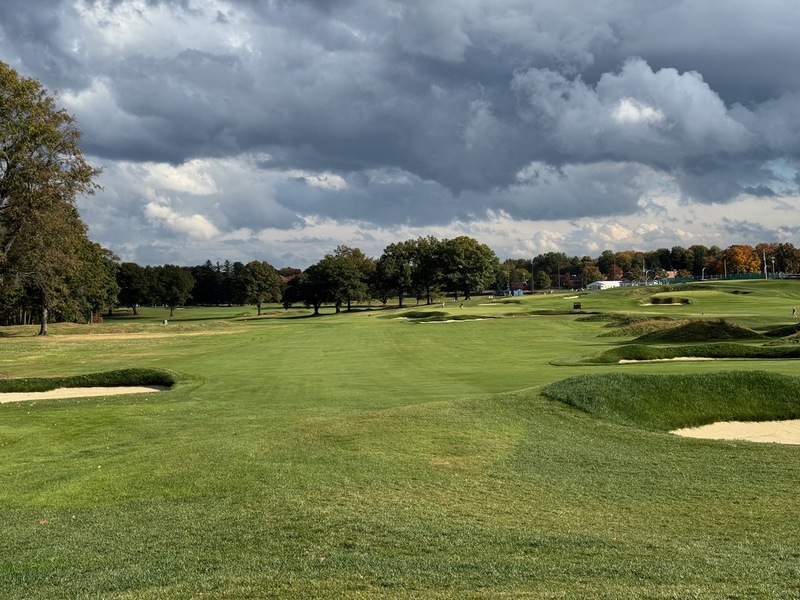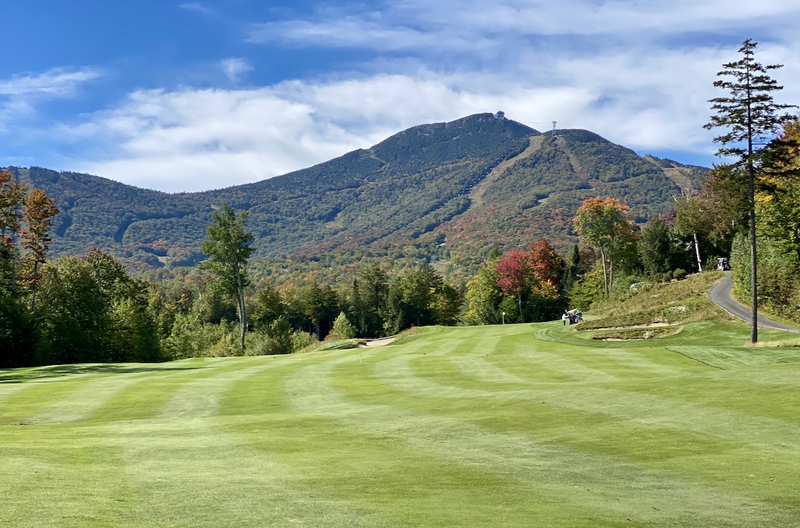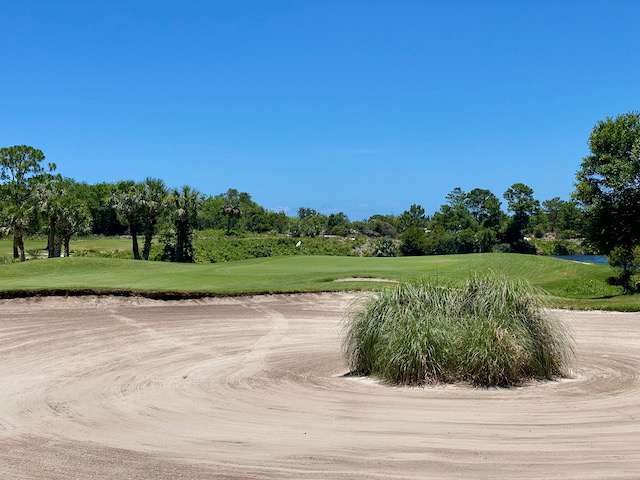In a politically divided country, those searching to relocate to a golf community could be forgiven for factoring into their decision what their new neighbors might be thinking. Right or left, conservative or progressive, Democrat, Republican or Independent, most of us look forward to a retirement free of controversy and confrontation: Debate, maybe, but not the kind of discussions that could lead to name-calling, raised voices or worse.
Golf communities, for good reason, do not report the political leanings of their residents nor their political party affiliations. But as we wind our way toward intense and divisive national and statewide elections on November 5, it could be helpful to have some inkling of what awaits you in the communities you, your family or friends might be considering for future homes. I have looked at voting patterns by county from the 2020 Presidential election and 2022 mid-terms to identify golf communities located in blue and red counties. Do not assume that the residents of golf communities inside a county that votes one way necessarily feel the same; many golf communities are populated by people who moved from states and counties with different orientations. My notes below indicate only how people in the surrounding county voted. For those who don’t expect to hole up inside the gates of their communities, that could be important. Note also that, in some counties, “unaffiliated” voters outnumber declared voters of the two major parties. The truly unbiased should find comfort living in places like that.
First, a few sweeping generalizations. In the Southeast Region, which is the focus of my research and where most of the people I have worked with for 20 years have moved, counties with a major university tend to vote blue. In most urban areas, with a million or more residents, the same is true. However, in less populated areas of the Sunbelt which feature many fine golf communities, the voting patterns are solidly red, with a few exceptions. I’ve looked primarily at counties that are home to numerous well-regarded golf communities, many of which I have visited. The following are selected areas of the South, by state and county, that represent a range of political sentiments as indicated by past voting results. Note that totals may not equal 100% due to third party candidate votes.
Virginia
Northampton County’s population was just 12,000 as of the 2020 census. In the 2020 election, 3,667 (54.4%) votes were cast for Joe Biden and 2,955 (43.9%) for Donald Trump of a total 6,732 votes. Bay Creek, which covers more than 1,700 acres and represents a significant portion of Cape Charles’ population, features 27 holes of Palmer and Nicklaus golf, some of them bordering on the beautiful inland section of the Chesapeake Bay. Homes are currently selling from $600,000, condos and townhomes from $500,000 and homesites from the $100,000s. The community is located 10 miles from the Chesapeake Bay Bridge/Tunnel and 30 miles from Norfolk, VA.
 Bay Creek Resort, Cape Charles, VA
Bay Creek Resort, Cape Charles, VA
Viniterra, New Kent, New Kent County
New Kent County is rural, located between Richmond and Williamsburg, under a 40-minute drive from both. The population of New Kent County in 2022 was 25,000. In the 2020 Presidential election, Donald Trump took 66.6% of the total vote, with Joe Biden getting 32%. Viniterra is a unique community; a working winery is the first thing you see before you turn into the community’s attractive main drive. The New Kent Winery is a popular gathering place for residents of Viniterra as well as locals and visitors to the area. The semi-private golf course is by Rees Jones and features multiple tees, with the longest at over 7,700 yards. With vines beside some of the fairways, you might imagine you are playing in Napa Valley. Viniterra is a relatively young community, built after the 1980s & 90s boom in golf community development, and the housing stock looks fresh and inviting. Homes, including in a new neighborhood introduced in September, currently are listed beginning around $500,000, with most in the low seven-figure range. A one-acre lot is currently listed for $186,000.
North Carolina
New Hanover County is home to Landfall, one of the most conveniently located golf communities in the Southeast. The county’s population in 2022 was 235,000, more than half of it contributed by Wilmington. In 2020, New Hanover County went 50.3% for Biden and 48.2% for Trump. In the 2022 midterms, a Republican was elected to a U.S. Senate seat with 50.5% of the vote, and races for the U.S. House of Representatives were split.Less than 10 minutes out the back gate of Landfall is Wrightsville Beach and the Atlantic Ocean; out the front gate on the other side of the community lies the historic and bustling college town of Wilmington with plenty of shops, restaurants and the campus of UNC – Wilmington. Landfall is pretty much a golfer’s paradise and includes 27 holes by Jack Nicklaus and 18 by Pete Dye. Resale homes in Landfall range from $730,000 up to $4 million.One other Wilmington golf community of note is Porters Neck, with a classic Tom Fazio layout.
Brunswick Forest, Leland, Brunswick County
One of the fastest growing counties in the nation over the last two decades, Brunswick is bordered at its northern end by Wilmington and on its southern end by North Myrtle Beach. Nearly all 30 golf courses in the county are accessible to the public, but most of them are inside the borders of golf communities. In 2020 in Brunswick County, Donald Trump beat Joe Biden by a margin of 25 points, 62% to 37%. In the 2022 midterms, Republicans swept all local elections. A total of 57% of all eligible voters in Brunswick County cast a ballot in 2022. Brunswick Forest properties opened for sale in 2007. The community had gained so much momentum in its first couple of years that the 2009 recession hardly affected sales. Brunswick Forest was smartly organized into discreet neighborhoods, with a links-style golf course at its center (designed by local architect Tim Cate). I recall that modest new homes at opening were selling for the low $200s; today, despite the run up in prices across the south, I count 16 houses priced under $500,000. Other good quality golf communities in Brunswick County include Compass Pointe, St. James Plantation, Winding River, Rivers Edge, Ocean Ridge Plantation, and Sea Trail Plantation.
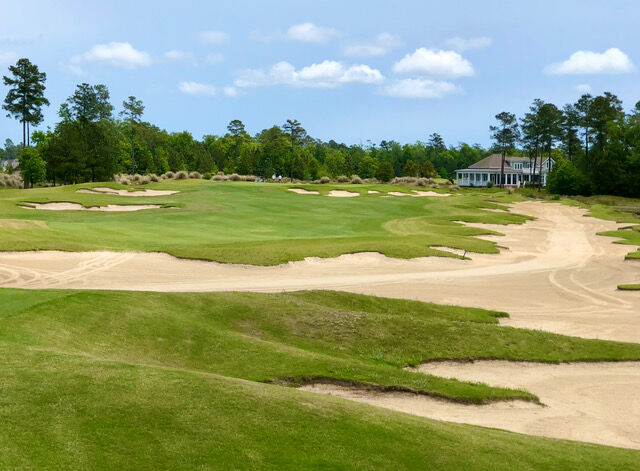 Cape Fear National Golf Club, Brunswick Forest, Leland, NC
Cape Fear National Golf Club, Brunswick Forest, Leland, NC
South Carolina
Barefoot Resort, North Myrtle Beach, Horry County
Georgetown County stretches from Charleston County (home to the historic Charleston) to its south, and Horry County (home to Myrtle Beach) to its north, both counties overflowing with high-quality golf communities. Georgetown County is no slouch either when it comes to golf communities, and DeBordieu – roughly translated as “near to God” – is at the upper echelon. In 2020, Georgetown County went for Trump, with 55.9% of the vote compared with 43.1% for Biden. Horry County was even redder, with 66.1 for Trump and 32.9 for Biden. In the 2022 midterms, in both counties, Republicans won most key local elections, including U.S. Senator Tim Scott’s reelection.
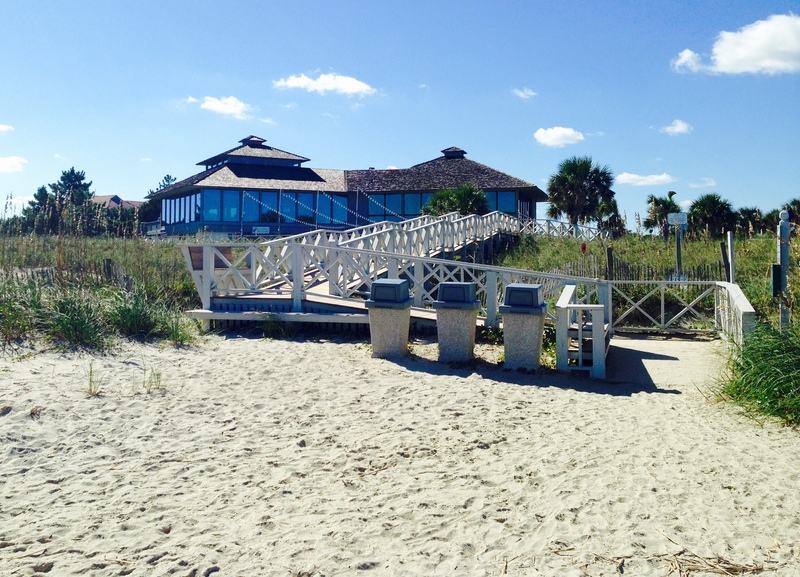 The Beach Club at DeBordieu Colony, Georgetown, SC
The Beach Club at DeBordieu Colony, Georgetown, SCDeBordieu Colony is unique on the South Carolina coast in that its property extends to the ocean, providing an almost three-mile stretch of beach for its residents’ use. Add that to the fine 18-hole Pete Dye golf course, and the community’s proximity to the historic town of Georgetown, and DeBordieu checks all the boxes for comprehensive golf community. Home prices reflect the substantial amenities, including the beach club, with current resales priced above the seven-figure mark. Other golf communities of note in Georgetown County include Pawleys Plantation, Wachesaw (private), the Reserve at Litchfield (private), Willbrook Plantation, Litchfield Country Club and others. Two of the best public golf courses in the entire Grand Strand of Myrtle Beach are located in Georgetown county, Caledonia and True Blue.
 The Love Course at the Barefoot Resort, North Myrtle Beach, SC
The Love Course at the Barefoot Resort, North Myrtle Beach, SCCobblestone Park, Blythewood, Richland County
Richland County is arguably the most reliably Democrat county in the otherwise predominantly red state of South Carolina. The county surrounds the city of Columbia, home to the University of South Carolina’s main campus. In the 2020 Presidential election, Joe Biden defeated Donald Trump in Richland by a 68% to 30% margin. In 2022, residents of Richland County voted overwhelmingly for Democrat candidates but most of those candidates lost their statewide elections.
 Cobblestone Park Golf Club, Blythewood, SC
Cobblestone Park Golf Club, Blythewood, SCGeorgia
The Landings on Skidaway Island, Savannah, Chatham County
In a state as hotly contested and close as Georgia was in 2020, one could reasonably say that Chatham County helped win the Presidency and Senate for the Democrats. Biden captured 78,254 votes (59%) compared with Trump’s 53,237 (40%), or a 25,000-vote difference. (Recall that Biden and Trump were just 11,779 votes apart statewide.) In 2022, the county gave decisive margins for Democrat Senator Raphael Warnock – he won -- and Stacey Abrams, who was running against popular Governor Brian Kemp – she lost.
 The Landings, Savannah, GA
The Landings, Savannah, GA







